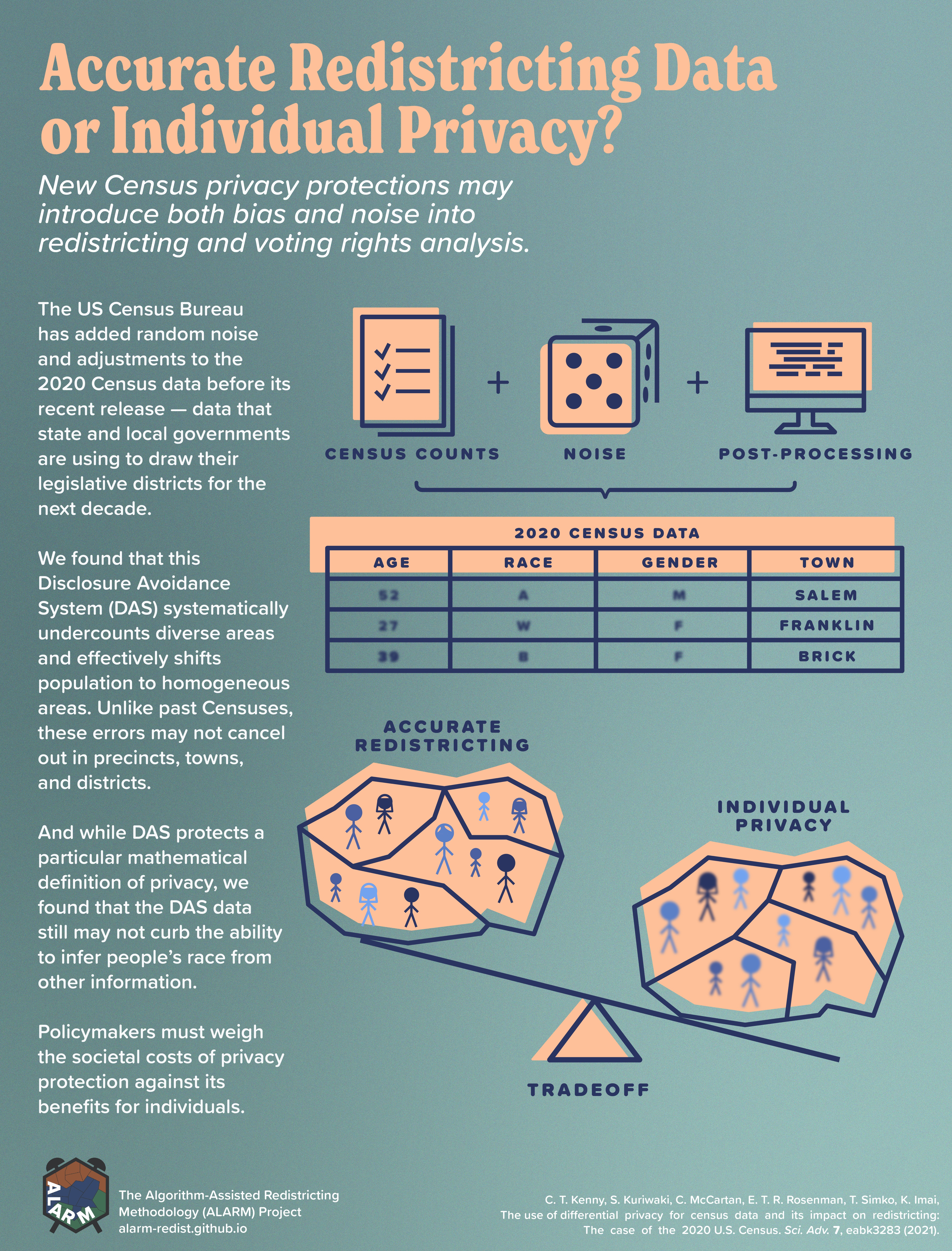Revised and published: The use of differential privacy for census data and its impact on redistricting
A new postscript analyzes the final version of the U.S. Census Bureau’s Disclosure Avoidance System.
At the end of May, the ALARM Project released a report examining “The Impact U.S. Census Disclosure Avoidance System on Redistricting and Voting Rights Analysis.” The Census Bureau has since updated the system parameters and released 2020 Census Data protected under this Disclosure Avoidance System.
Our original report has been revised to include an analysis of the new system parameters, and appears today in the journal Science Advances.
Read the paper: The use of differential privacy for census data and its impact on redistricting: The case of the 2020 U.S. Census
